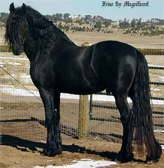Insulin Resistance In Horses
Is This Your Horse?
Chronic Sore Feet
Easy Keeper – Stays large on little food
Rotation on Radiograph
Can’t be on Pasture
Founder History
On Pergolide by still foot sore
Painful on hard or frozen ground
Elevated Insulin on Blood Tests
Trapped on a Dirt Lot
 Can race and show on Heiro – 100% approved products – no need to withdraw
Can race and show on Heiro – 100% approved products – no need to withdraw
What Is In Heiro?
What is the Heiro Program?
What Is Insulin?
What is Horse Insulin Resistance?
What To Expect from Heiro – Before/After Test Sample Results
Get out of “jail” (a dirt lot) and back to pasture where they are meant to be and to play with their buddies. HEIRO™ is the only equine supplement that helps your horse get back to pasture where they belong.
What is in Heiro?
The only one that tested to ensure safe sugar and starch content. You have no idea of the levels of these important ingredients in other products.
♦ The only supplement double-lab tested for mineral amounts. These tests show how safe HEIRO is on levels of over ten (10) important minerals.
♦ The only one that provides documented information regarding the Vitamin E level per scoop showing we are the highest level in the world. Vitamin E is an antioxidant, anti-inflammatory, and vascular supporter of the hoof.
| Ingredients: | 1. Natural Herbs: | Proprietary herbal blend exclusive to HEIRO containing natural herbs: Fenugreek, Ocean Kelp, Blue-Green Spirulina Algae, Cinnamon, Ginger, Willow, Peppermint, Milk Thistle, Alfalfa. No fillers, no artificial colors or preservatives. All natural, great tasting blend. |
| 2. Vitamin E Concentrate | 128,190 IU/LB | |
| 3. Magnesium Oxide Mineral | 6,360 ppm |
You list the products, so what makes HEIRO a proprietary blend?
The amount of each herb, the part of the plant used to make the herb, and the unique blending process to bring the Herbs into a combination with Vitamin E and Magnesium. Hundreds of Insulin tests were run on horses using different types and amounts until we got real results that showed in how the horse moves, their ability to get back on grass, and lab test improvements.
![]() Click Here to see the Test Results on How Heiro Lowered Insulin In Horses
Click Here to see the Test Results on How Heiro Lowered Insulin In Horses
![]() Click here to see 26 ways Heiro is the Best Choice and why the winner over other products.
Click here to see 26 ways Heiro is the Best Choice and why the winner over other products.
 HEIRO is directly available all over Canada. Click here to see a list of retailers.
HEIRO is directly available all over Canada. Click here to see a list of retailers.
The 4 Easy Steps of the Heiro Program:
1. Hay Eating – In the right amount and right rate, your horse will have 24/7 forage, which will reduce insulin surging.
2. Rotation Balancer – higher protein in these lower insulin 3 ways. They are also low carb.
3. Thyroid Function – Low in all Insulin Resistance horses – now at bottom of normal range for T4 = sub-optimal. Need to be in top of normal range which is proven to help insulin sensitivity and help reduce nerve pain in feet.
4. Heiro – 1 scoop 2x a day for 10 days, then 1 scoop 1x a day.
*Note: if sore, will need a 5th step on pain management due to pain, increases insulin in all animals, so piles on top of metabolic insulin.*
What is Insulin?
A. Insulin is a hormone produced by an organ in the abdomen called the Pancreas. Using a Quarter Horse for reference, the Pancreas is about two feet behind the girth of the saddle on the right side and weighs approximately ¾ of a pound.
About 98% of the Pancreas produces enzymes to break down food in the gut and only 2% make hormones such as Insulin. Hormones are chemicals produced by one type of tissue that are transported to target tissues that have special receptors for the hormone; once the hormone and the receptor connect, the hormone will facilitate reactions inside the target cell.
B. Horse Insulin has many jobs and many targets. Insulin has direct action on all cells in the body (except the brain), and helps in carbohydrate, protein, and fat breakdown products entering the cells.
Insulin’s main job involves carbohydrate metabolism. Insulin release from the Pancreas is triggered by rising levels of carbohydrate in the bloodstream. The carbohydrate that causes this Insulin outflow is called Glucose. As Glucose levels rise, Insulin levels will rise and when Glucose levels go down, less Insulin is released from the Pancreas and hence Insulin levels go down.
![]() There are several ways for Glucose levels to go up, but by far, the biggest rise comes after your horse eats. In hay and grass, carbohydrates are the main type of nutrient, with protein second, and fat the third type. In magazines, carbohydrates are often referred to as “sugars” or “starches”.
There are several ways for Glucose levels to go up, but by far, the biggest rise comes after your horse eats. In hay and grass, carbohydrates are the main type of nutrient, with protein second, and fat the third type. In magazines, carbohydrates are often referred to as “sugars” or “starches”.
Starches are actually long chains of thousands of Glucose molecules linked together. As your horse chews, he is starting the process of breaking down starch to release the simple sugar unit of Glucose. Saliva enzymes, stomach acid, and small intestine enzymes further breakdown starch into individual Glucose molecules. Once these Glucose units get into the small intestine, they are absorbed out of the digestive tract and into the bloodstream. After a meal, large quantities of Glucose pour into the bloodstream. Blood Glucose levels are now rising. In literature, blood Glucose is often referred to as the “blood sugar”. This high level of Glucose circulates to the Pancreas and will trigger the Pancreas to release Insulin into the bloodstream. Now we understand Insulin’s source and what causes it to go up and down, which leads us to what it does.
C. Equine Insulin Resistance in horses is the correct term to use when they get pathologically high levels of Insulin. There are many other terms that have been used in the past that are inaccurate or confusing such as:
- Metabolic Syndrome – this requires high resting Glucose levels which most horses do not get and requires central obesity which horses do not get.
- Pseudo Cushings and Peripheral Cushings – horses get Insulin Resistance by itself with no Cushings at all in many cases, so trying to attach Cushings to this syndrome is not accurate. Many Cushings horses can develop Insulin Resistance but not all of them do.
- Horse Diabetes – most horses do not have elevated blood Glucose levels in Insulin Resistance.
 Click here to see more information on Horse Diabetes.
Click here to see more information on Horse Diabetes. - Hyperinsulinemia – this is inaccurate because horses and people elevate Insulin levels many times a day after a meal which is normal. The correct term, developed by Dr. Reilly, is Equine Pathological Hyperinsulinemia with Insulin Resistance being one of the causes.
D. Horse Insulin is crucial in promoting Glucose in the bloodstream to move into cells. Glucose is the major fuel used by cells for energy. Again, Insulin has many target tissues but the most important are muscle, fatty tissue, and the liver. How Insulin gets Glucose into cells is much like a lock and key. On the muscle cell, for example, are thousands of receptors waiting for Insulin to arrive. The receptor is the lock and Insulin is the key. When the key fits the lock, it allows Glucose to enter the cell. As Glucose goes from the bloodstream into the cell, the blood Glucose level will drop and hence the output of Insulin from the Pancreas will drop. Glucose transport into muscle and fatty tissue goes up 5-20 times in the presence of Insulin. This fact highlights how important Insulin’s action is in obtaining energy for the cell.
- Horse Insulin promotes Glucose into fat cells which help in fat synthesis
- Simultaneously, Insulin promotes enzymes that help increase fat synthesis
- At the same time, Insulin inhibits another type of enzyme that normally breaks down fat
This is a “triple-barrel shotgun effect” — all of which promote fat. This action by Insulin is normal in your horse but you can already hear warning bells if things go wrong. Too much Insulin means too much fat and that puts weight on your horse. ![]() Click here for information on Proper Diet for the Insulin Resistant Horse.
Click here for information on Proper Diet for the Insulin Resistant Horse.

What is Horse Insulin Resistance?
A. The Definition: Inability to respond to and use Insulin the body produces because Insulin is not functioning properly; higher Insulin levels are needed to achieve the same effect.
There is an abnormally high amount of Insulin circulating for long periods of time that leads to diseases such as Laminitis. Normally, we know the usual level of Insulin throughout the day and know that after a grain meal, the Insulin level will go up 3-4 times the regular level due to Insulin responding to Glucose pouring into the bloodstream. The short-term high level of Insulin is normal Hyperinsulinemia and lasts only a few hours.
In Horse Insulin Resistance, the base level of Insulin is about 3 times higher, so there is a constant elevation during the day. When an Insulin Resistance horse has a grain meal, there is a pathological Hyperinsulinemia that sees the level of Insulin go up 30, 40, 50, and over 100 times usual levels, and can remain elevated much longer than normal.
According to the American Diabetes Association, people with Insulin Resistance and Diabetes have a 7-12 year decreased life span. In a horse, that translates to losing 2.5 to 4.5 years of life.
B. What is causing the condition?
Basically, the key and lock system is broken. There are several ways this occurs and they can occur separately, or combine to do multiple damage.
Ways to cause Pathological Hyperinsulinemia:
- The receptor (the lock) on the target cell is directly damaged. Insulin comes along (the key) and can not make a Lock and Key connection. With no connection, Glucose can not enter the cell and is essentially shut out. Blood Glucose levels do not drop and are now artificially elevated, so the Pancreas pours out more and more Insulin to correct the problem. There are lots of keys with not enough working locks. Result: higher than normal levels of Insulin.
- The number of receptors on the cell is lower than normal. Again, the same result as above: higher than normal levels of Insulin. The receptors work, but there is just not enough to get Glucose quickly into the cells.
- Insulin’s normal action is directly inhibited. The keys do not work right even in target cells that are normal. Again, this means Glucose is not getting into the cells and the Pancreas keeps pouring out more and more Insulin in an attempt to overcome the problem.
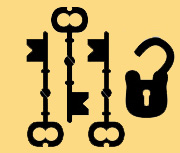
![]()
The final result that the target cells are resisting to work normally with Insulin (hence the name Insulin Resistance) which causes the Pancreas to try to overcome the resistance by pouring out more and more Insulin. In Insulin Resistance, this higher and higher level of pathological Hyperinsulinemia is able to still push Glucose into the cells and maintain normal blood Glucose (blood sugar) levels. ![]() Click here to see How to Test Horse Insulin Correctly.
Click here to see How to Test Horse Insulin Correctly.
C. What conditions are breaking the lock and key system in my horse?
If your horse is overweight at an early age, they can have 3 times the number of fat cells as a regular horse. Some fat cells release toxins that interfere with Insulin’s action at the target cell.
1. Toxins from fat cells.
- If your horse is overweight: Fat, itself, is increased with high levels of Insulin and it turns around to interfere with Insulin which leads to more Insulin. This leads to a vicious merry-go-round.
- Most Insulin Resistance horses are overweight. A recent University of Virginia/Maryland report estimates 50% of the horse population is overweight and 20% are obese (Obese is over 20% beyond ideal weight). In addition, if a horse is obese, about 1/3rd of them will have Insulin Resistance.
2. Insulin
Insulin at very high levels starts to interfere with other Insulin’s ability to get to receptors. The keys are breaking each other. This is “negative cooperatively”. *A recent study from Australia showed that injecting high Insulin into a normal horse caused Laminitis within 2 days. High Insulin and Laminitis are cause and effect.
![]() Click here to see Dr. Sandow’s 2018 study showing high insulin exposure directly damages laminae.
Click here to see Dr. Sandow’s 2018 study showing high insulin exposure directly damages laminae.
![]() Dr. Reilly is the “Ask the Vet” expert on Equine Insulin Resistance for the AAEP.
Dr. Reilly is the “Ask the Vet” expert on Equine Insulin Resistance for the AAEP.
![]() Click here to see 26 Ways Heiro Helps your Horse
Click here to see 26 Ways Heiro Helps your Horse
3. Does My Horse Have Horse Diabetes?
No. Horses do not get Diabetes like people.
Equine Insulin Resistance is mistakenly called Horse Diabetes, Horse Pre-Diabetes, Horse Early Stage Diabetes, or Horse Type 2 Diabetes – for years and it created confusion. Horses and people can both get Insulin Resistance, but horses do not go to the next step of Diabetes. In people, they can advance on to Diabetes if Insulin Resistance is not controlled.
In Insulin Resistance: Blood Insulin is high but Blood Glucose (Blood Sugar) is normal for both horses and people. In people, Early Stage Type 2 Diabetes occurs if Insulin Resistance is not controlled: Blood Insulin is High, Blood Glucose is also high. Horses do not get this type of Diabetes. In people, if Early Stage Type 2 Diabetes is not controlled, the Pancreas cells “burn out” and can’t make Insulin any more, so Blood Sugar goes super high and Insulin shots are required. This is called Late Stage Diabetes. Again, horses do not get this type of Diabetes.

|
|
Blood Insulin |
Blood Glucose |
| Horse and Human in Insulin Resistance |
High |
Normal |
| Human Early Stage Diabetes |
High |
High |
| Human Late Stage Diabetes |
Low |
Sky High |
Rarely in horses, Glucose values can be elevated such as in Equine Cushings, extreme infections, or high fevers. If the horse is already having Equine Insulin Resistance with high Insulin, then will see high Insulin and High Glucose. This is not true Horse Diabetes but an overlapping of diseases. Once the horse is treated, Glucose levels will drop back down to normal.
What to expect – Before/After test sample results from usage of HEIRO™?
| Horse | Breed | Date Tested Insulin Results prior to HEIRO |
Dated Tested Insulin Results while on HEIRO |
Status |
| “A” | Morgan | 5/22/07 334.8 ulU/ml |
7/14/07 33.8 ulU/ml – Normal |
On Pasture. Moves Well |
| “B” | Connemara | 2/6/07 173.9 ulU/ml |
3/7/07 47.1 ulU/ml– Normal |
On Pasture. Moves Well |
| “C” | Pony | 7/19/07 730.8 ulU/ml |
8/7/07 – 131.64 ulU/ml 11/21/07 – 87.68 ulU/ml |
On Pasture. Moves Well |
| “D”` | Quarter Horse | 10/31/07 171.7 ulU/ml |
2/17/08 11.4 ulU/ml – Normal |
On Pasture. Moves Well |
| “E” | Tennessee Walker | 8/24/06 126.9 ulU/ml |
10/26/06 28.5 ulU/ml – Normal |
On Pasture. Moves Well |
*Note the Dramatic Drops*
*IR horses have normal Glucose/high Insulin
*Normal post feeding levels are under 60 u/U/ml for Insulin
If over 60 uIU/ml or 430pmol/L for Insulin, your horse is Insulin Resistant.
Click here to see 24 Lab Tests Showing Heiro Works
4. Cushings Disease
Cushings disease can lead to Insulin Resistance in several different ways. The horse can have Cushings and Insulin Resistance at the same time. Why?
- High ACTH levels in Cushings can directly interfere with Insulin’s action. ACTH is damaging the keys.
- High ACTH levels lead to Cortisol abnormalities. Cortisol is responsible for increasing blood Glucose levels by causing stored sugars in muscle/liver to be released. The higher levels of Glucose trigger more and more Insulin.
- Cortisol, like ACTH, can directly interfere with Insulin’s action. More keys are damaged. This is why it is smart to test the ACTH level and the Insulin level of a Cushings horse on a regular basis. Your Cushings horse could have normal Insulin and later become an Insulin Resistance horse on top of Cushings in a large number of cases. You are treating it with Pergolide but not treating the Insulin Resistance and wonder why they have Laminitis still— now you know why!
 Click here for in-depth information on Cushings and Pergolide.
Click here for in-depth information on Cushings and Pergolide.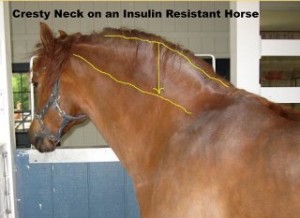
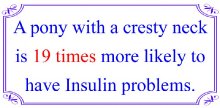
5. Stress
Mental/Physical— surgery, infections, shipping… Increased Epinephrine causes increased ACTH, increased Cortisol, leading to more Insulin Resistance.
- Increased Cortisol will interfere with sleep, so more stress.
- Increased Cortisol will depress immune system leading to more infections that lead to higher Insulin levels.
- Increased Cortisol breaks down muscle which results in muscle weakness— often see in Cushings horses -skinny with fat pads.
- Increased Cortisol decreases muscle synthesis.

6. Insulin Resistance in horses creates cardiac changes – new finding.
 The heart is directly affected by Insulin Resistance in a 2017 study from a Swiss Veterinary School. Heart rate is higher (37% had over 48 beats a minute) than the controls which accrued 40-41 beats per minute. This is important for Vets to know due to the heart rate is a parameter measured for health status.
The heart is directly affected by Insulin Resistance in a 2017 study from a Swiss Veterinary School. Heart rate is higher (37% had over 48 beats a minute) than the controls which accrued 40-41 beats per minute. This is important for Vets to know due to the heart rate is a parameter measured for health status.
Also of interest, the Insulin Resistant horse’s Insulin resting rates were only 10 uU/ml, but on a challenge they jumped way up to 145 uU/ml, further showing the need for a challenge to find true Insulin Resistant horses. The heart, itself, had changes in wall thickness in areas in Insulin Resistant horses also. Insulin Resistance effects not just the feet, but total body systems. Click here to see Dr. Heliczer’s article in JAVMA on Cardiovascular findings in ponies with equine metabolic syndrome.
7. New study via Dr. Reilly – “Insulin Resistance – New Triggers”. More research results pending.
Genetic lock– diet/exercise is not controlling Insulin.
Owners have tried multiple management techniques but the horse is still foot sore, has repeat Laminitis, can’t be turned out on grass, and stays big on little food. Also the horse is a candidate for future problems and the owner would like to avoid a problem instead of waiting for the problem to occur. These are the horses the HEIRO program can help.
Proper diet and exercise is essential for horse health. This product is a supplement to help maintain horse health. This product is not intended to diagnose, treat, cure, or prevent disease.






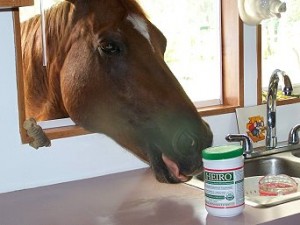


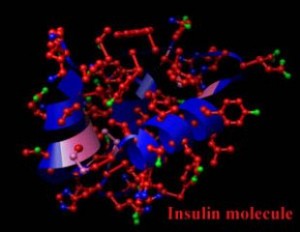
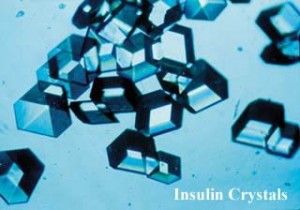
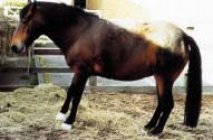

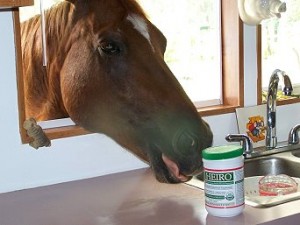

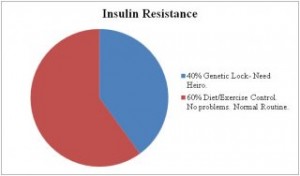




; ?>/wp-content/themes/twentyten/img/NMImacLogo_150.jpg)
